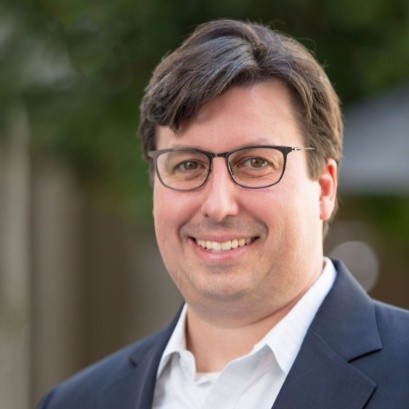Paul Carroll
To start out, how are agents and brokers responding to digital distribution platforms?
Jonathan Hendrickson
Agents and brokers are responding positively to digital distribution platforms -- the platforms are a source of enablement for our brokers who use them. Within Gallagher, two examples of who uses them are the inside sales brokers in small markets and the wholesale brokers working with E&S carriers. Both are benefiting from them. Gallagher uses platforms to make it easier for clients and save our team's time in working with multiple markets.
Paul Carroll
Can you say a little bit about how that works? Early on, everybody was talking about disintermediation. Now people seem to realize that agents and brokers have a real role, How does that hybrid work, between the digital and the person?
Jonathan Hendrickson
There are quite a number of insurtechs that are working to enable brokers, and we partner with those types of companies.
One type of enabling platform is a SEMCI, which is a single-entry, multiple-carrier interface. A SEMCI allows brokers or clients to put information into a system that can yield several quotes and options for clients. It is an enabler of the end-to-end process for a client and makes it smoother.
Paul Carroll
That's helpful. What about customer preferences? What are they showing that they like and don't like? And does it vary by type of client, line of coverage or anything else?
Jonathan Hendrickson
Preferences vary by type and size of client. Clients are more comfortable making digital purchases in personal lines than in commercial lines. That's been true for a while. In commercial lines, clients largely want to talk with an agent or broker before completing a purchase, even for small commercial purchases. The market research we’ve seen estimates that small commercial market purchases are made at single digits in terms of percent of premium (coverage) that is purchased fully digitally.
Most clients begin their search online with education and research, even if they don't make a purchase. Often, they end up working with someone who can help answer questions. Some clients like to correspond with text, so Gallagher is working on developing more of those kinds of capabilities to meet the client where they want to be.
Paul Carroll
Having covered technology for a while, I’ve found that there's sort of a flow. Technology starts one place and then flows in a direction for a long time. So, for example. Defense Department work in the
1960s and 1970s flowed out into consumer channels. Now, technology seems to be flowing in the other direction. My hypothesis on digitization and insurance has been that it would really start in the personal lines, then maybe move into small business as it moves up into large commercial. Does that sound right?
Jonathan Hendrickson
From what we've seen so far, the movement to fully digital purchases beyond personal lines has been pretty slow. And there's some value to moving at a slower pace. Insurance is in the business of de-risking things for other industries. When you have a bedrock that you can build upon, that's very helpful and a great foundation.
Paul Carroll
What about generative AI? How much is that being used? And how much do you think it can be used in the next year or two?
Jonathan Hendrickson
Overall, we believe that use cases in generative AI are still in the early innings. But it shows great promise. Gallagher has been running a number of proof of concepts to understand the capabilities of generative AI, and we expect we're going to be able to leverage it to help enable a number of areas, including our client, sales and service teams. We are encouraged about how these capabilities will help and support them.
Paul Carroll
Can you share a use case or two?
Jonathan Hendrickson
Gallagher started using generative AI for language translation, and so far it has been terrific. Prior to generative AI, we’d work with other organizations who would help with the different languages. For example, if you work in Quebec, you need to translate to French Canadian. In one of the really early wins, we found that generative AI language translation can give us a better starting draft.
We're doing other things, as well, including seeing how it can glean information from documents to better prepare other documents. A lot of work has been done determining how we help provide information faster for those who are going to be providing advice to clients.
Paul Carroll
That’s interesting. While with the Wall Street Journal, I lived in Brussels and then in Mexico City. So I've struggled with both French and Spanish. An AI translator would have been nice.
More broadly, how are agents and brokers leveraging technology to streamline and enhance their own internal processes?
Jonathan Hendrickson
Gallagher is working to leverage technology to streamline and enhance our business processes. We're using single-entry, multiple-carrier interface platforms to save time providing quotes to clients. We're also leveraging technology to provide a renewal process that is more digital, which saves time for both our clients and our service teams. We are also combining data with technology platforms to help provide advice through benchmarking and analytics. Creating more digital self-service options for clients while leveraging technology to help increase efficiencies are just a few of the ways that we're using these new capabilities.
Paul Carroll
To talk about Gallagher more broadly, how are you focusing on technology and innovation? And are there particular Insurtech sectors that are looking interesting to you?
Jonathan Hendrickson
Two of the top categories for Gallagher are digital enablement and data and analytics, including AI. Another area of importance involves evolving risk management solutions. It's an area we like to keep an eye on, if for no other purpose than just to be a good adviser to clients who are looking to leverage these kinds of solutions.
Paul Carroll
At The Institutes, we've begun a real focus on “Predict & Prevent.” Is that the kind of thing you're trying to do with clients? Or could you just tell me a little bit about what some of those risk management opportunities are?
Jonathan Hendrickson
Gallagher prides itself on staying on top of what's happening in the marketplace, even if it's not a service that we're offering to a client. It is important for us to be educated about trends so we can do a better job handling and advising about risk management.
“Predict & Prevent” is one of the services that we have been working on with clients. As an example, there are wearable devices to help employees with ergonomics and are designed to prevent injury. When you have people whose workdays involve a lot of movement, the devices can help them identify high-risk postures. If a device detects a high-risk posture, it gives them a little haptic buzz, and with the right kind of training and reinforcement, movements that can lead to injury can actually be minimized. Additionally, the behavior change can reduce uncomfortableness that diminishes employee production. So you can make the work environment better for people, and they don't have injuries that cost the company money.
Other technologies coupled with safety systems at workplaces that identify high-risk behaviors help employers know who needs additional coaching. All of this is designed to help people, which is ultimately a terrific outcome.
Paul Carroll
I love the themes you're talking about.
Jonathan Hendrickson
Besides the wearables, a lot of groups are trying to get out in front of water damage, which we know is a huge category of loss, with leak detection. And we’re seeing increasing interest from clients who are considering adopting some of those types of solutions.
Paul Carroll
It has always struck me that while rates are going up all over the place, they're coming down consistently in workers’ comp, which suggests that workers’ comp may be leading the way in terms of reducing risks.
This has been great. But is there anything I didn't ask about that I should have asked about?
Jonathan Hendrickson
I really liked the questions and topics we discussed today. These are the kinds of questions being asked, and here at Gallagher we are trying to work through solutions. Today's conversation seemed like a very natural extension of some of what the industry is trying to focus on and move toward.
Paul Carroll
Okay, perfect. I really appreciate your taking the time.
About Jonathan Hendrickson
 |
Jonathan Hendrickson is the VP, Head of Insurtech Development for Gallagher. Prior to joining Gallagher in 2018, Jonathan was the Head of Global Strategy for Aon Hewitt and led partnerships for Insurtech and Analytics across Aon. Prior to Aon, Jonathan worked at McKinsey & Company where he served clients in both health and P&C insurance. Jonathan began his career working in technology with Cap Gemini Ernst & Young. Jonathan has his M.B.A. from The University of Chicago Booth School of Business and his B.S. and B.A from the University of Southern California, all degrees with honors. |








